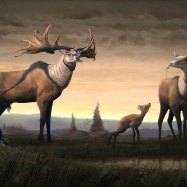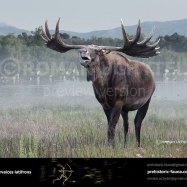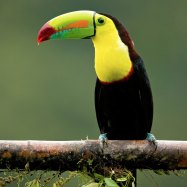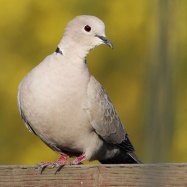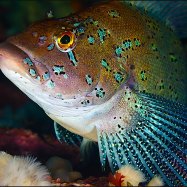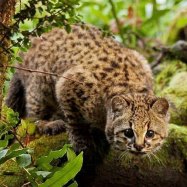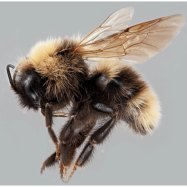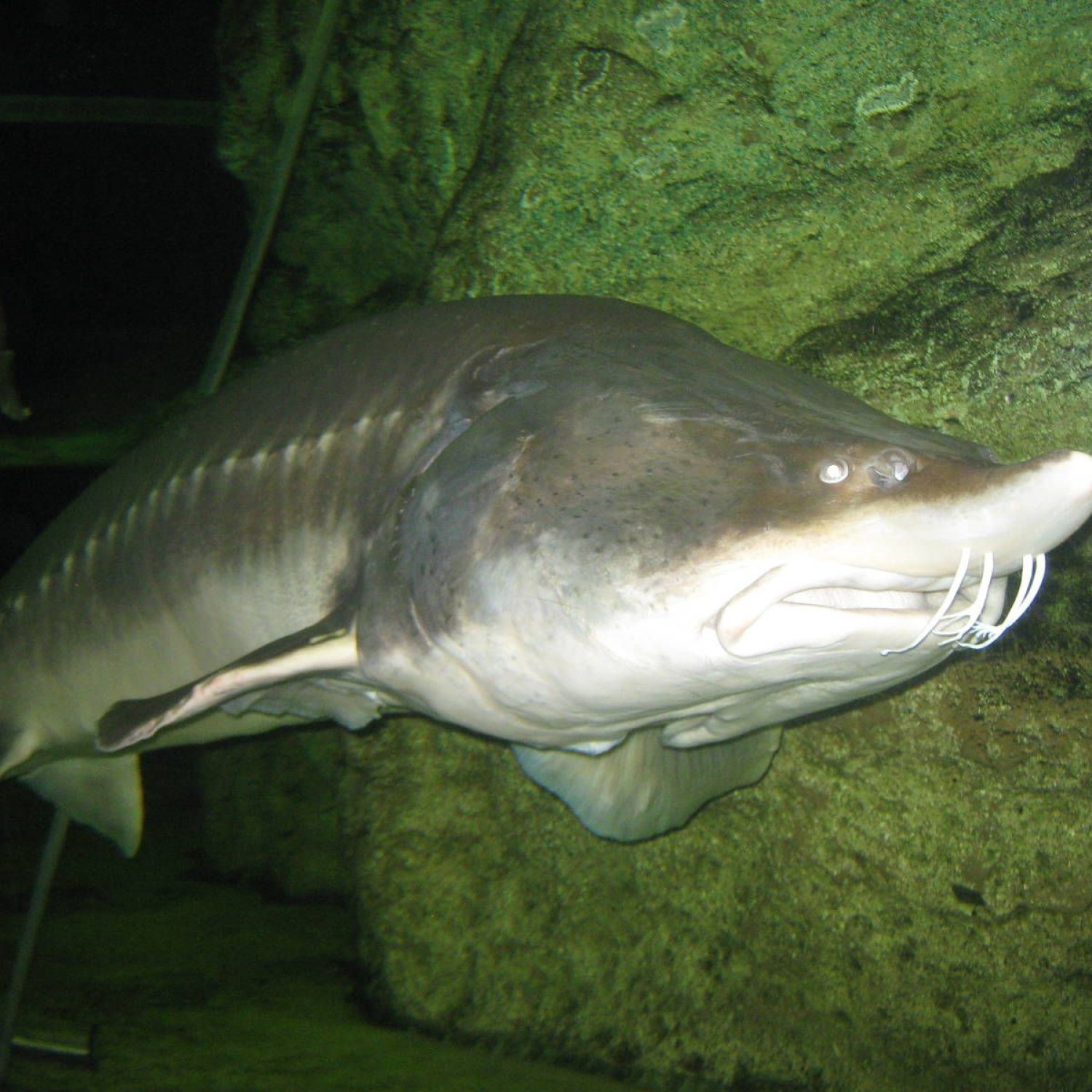
Kaluga Sturgeon
Up to 5 meters
. The Kaluga sturgeon, found in the Amur River, is one of the largest freshwater fish species. This elongated and streamlined creature can reach up to 5 meters in length and belongs to the Acipenseridae family. Its impressive size and distinct body shape make it a popular catch among anglers. However, due to overfishing and habitat destruction, the Kaluga sturgeon is now critically endangered. Let's protect these magnificent animals for future generations to come.
Animal Details Summary:
Common Name: Kaluga Sturgeon
Kingdom: Animalia
Habitat: Freshwater
The Majestic Kaluga Sturgeon: A Precious Yet Endangered Species
The world's oceans and rivers are home to a vast and diverse myriad of sea creatures, and some of them are truly mesmerizing. One such creature that is both rare and magnificent is the Kaluga sturgeon, scientifically known as Huso dauricus. This article will delve into the fascinating world of the Kaluga sturgeon, its characteristics, distribution, and why it is an endangered species.The Royal Lineage of Kaluga Sturgeon
The Kaluga sturgeon belongs to the animal kingdom, specifically the chordata phylum, which includes vertebrate animals Kaluga Sturgeon. It also falls under the class actinopterygii, the most diverse group of fish species containing over 20,000 species. The order for this species is acipenseriformes, which includes most of Earth's sturgeon, and the family is acipenseridae, consisting of 27 species of sturgeons.A Species at Risk
One of the most concerning things about the Kaluga sturgeon is its classification as an endangered species. They are native to the Amur River, which runs through China and Russia, and they have seen a significant decline in population over the years. This decline is mainly due to overfishing, habitat degradation, and pollution.The Kaluga sturgeon has been considered a delicacy in many cultures, and this has led to a high demand for its caviar. In the past, this fish was caught in large numbers, and its caviar was sold at exorbitant prices, making it a lucrative trade. However, as the demand for caviar increased, so did the fishing pressure, leading to the depletion of the Kaluga sturgeon population. Today, it is estimated that there are only a few thousand Kaluga sturgeons left in the wild, and the species is facing the very real threat of extinction Kiang.
Features That Make Kaluga Sturgeon Stand Out
The Kaluga sturgeon is a truly remarkable creature, with several unique features that set it apart from other fish species. One of the most striking characteristics of this fish is its size, as it can grow up to 5 meters in length and weigh over 1,000 kilograms. This makes it one of the largest freshwater fish in the world, only surpassed by the Beluga sturgeon.The body shape of the Kaluga sturgeon is another remarkable feature. It is elongated and streamlined, making it an excellent swimmer. This shape allows it to move effortlessly through the water and is attributed to the rapid growth of this fish. Unlike most other fish species, the Kaluga sturgeon does not possess scales. Instead, it has five rows of bony plates or scutes on its body, which acts as a form of protection.
Coloration and Habitat
The Kaluga sturgeon has a distinct coloration, varying from dark green to brown on the back, and a silver belly. This coloration helps it blend in with its surroundings. They can be found in freshwater habitats such as lakes, rivers, and estuaries. The Amur River is the primary location for the Kaluga sturgeon, as they are well-adapted to its conditions. They prefer to inhabit deep areas with a strong current and a rocky or sandy bottom.Carnivorous Feeding Habits
The Kaluga sturgeon is a carnivore, meaning it feeds on other living organisms. Its diet mostly consists of small fish, crustaceans, and worms. With its massive size and powerful jaws lined with numerous sharp teeth, the Kaluga sturgeon is a formidable predator. They have a unique filtering apparatus called gill rakers, which they use to trap their food.The Future of Kaluga Sturgeons
Despite the dire situation of the Kaluga sturgeon, there is still hope for its survival. China and Russia have taken measures to protect and preserve this species by enforcing fishing regulations and monitoring their population. Several conservation programs have also been implemented, such as breeding programs and habitat restoration.There has also been a significant effort to develop sustainable methods for harvesting caviar from the Kaluga sturgeon. Caviar farming, also known as aquaculture, provides an alternative to wild caviar and helps take the pressure off the wild population. In caviar farms, Kaluga sturgeons are bred and raised in controlled environments, and their caviar is harvested without harming the fish.
In Conclusion
In conclusion, the Kaluga sturgeon is a remarkable fish species with unique features and a rich history. It is also an endangered species that needs our immediate attention and efforts to protect and preserve it for future generations. While there is still much work to be done, the efforts to conserve this magnificent creature show that there is still hope for its survival. It is our responsibility to ensure that the Kaluga sturgeon continues to thrive in its natural habitat and not fall victim to human activities. Let us all take a stand to protect this precious yet endangered species.

Kaluga Sturgeon
Animal Details Kaluga Sturgeon - Scientific Name: Huso dauricus
- Category: Animals K
- Scientific Name: Huso dauricus
- Common Name: Kaluga Sturgeon
- Kingdom: Animalia
- Phylum: Chordata
- Class: Actinopterygii
- Order: Acipenseriformes
- Family: Acipenseridae
- Habitat: Freshwater
- Feeding Method: Carnivorous
- Geographical Distribution: China and Russia
- Country of Origin: China
- Location: Amur River
- Animal Coloration: Dark green to brown on the back, silver belly
- Body Shape: Elongated and streamlined
- Length: Up to 5 meters
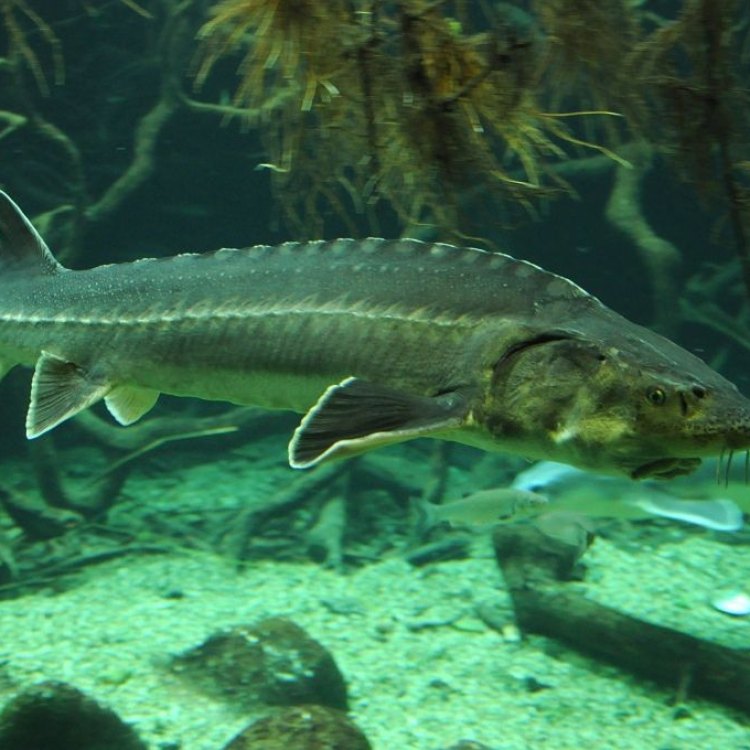
Kaluga Sturgeon
- Adult Size: Up to 1.5 tons
- Average Lifespan: 60-80 years
- Reproduction: Sexual
- Reproductive Behavior: Spawning
- Sound or Call: Not known
- Migration Pattern: Migratory
- Social Groups: Solitary
- Behavior: Bottom-dwelling
- Threats: Overfishing, habitat loss, pollution
- Conservation Status: Critically Endangered
- Impact on Ecosystem: Keystone species
- Human Use: Caviar production, sport fishing
- Distinctive Features: Large size, elongated body, bony plates
- Interesting Facts: Considered one of the largest freshwater fish species in the world
- Predator: Few natural predators
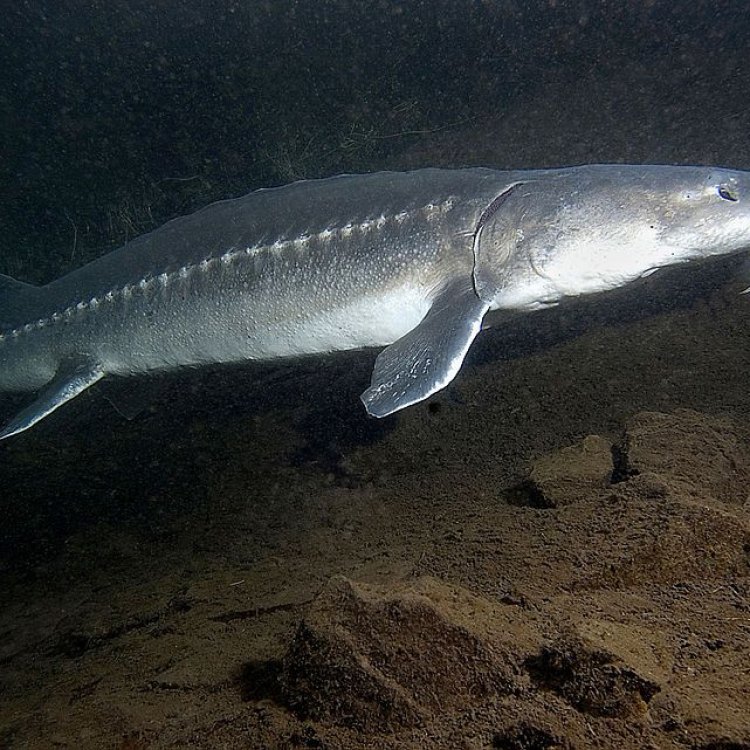
Huso dauricus
The Elusive and Endangered Giant: The Fascinating Kaluga Sturgeon
In the depths of the water, hidden from the human eye, swims a creature that has captured the imagination of many over the centuries - the Kaluga Sturgeon. This elusive and majestic fish, native to the Amur River basin in Russia and China, has remained a mystery to many due to its solitary and bottom-dwelling behavior. However, with the alarming decline in its population, the Kaluga Sturgeon has become a subject of great interest and concern for scientists, conservationists, and seafood lovers alike.With an adult size that can reach up to a whopping 1 PeaceOfAnimals.Com.5 tons and an average lifespan of 60-80 years, the Kaluga Sturgeon is one of the largest freshwater fish species in the world. Its size alone is enough to capture the attention of anyone, but there is much more to this ancient fish than meets the eye.
The Beauty of Reproduction: Sexual Spawning Behavior
Like many other sturgeon species, the Kaluga Sturgeon is a sexual reproductive species. This means that they require both male and female individuals to reproduce. However, what makes their reproductive behavior unique is their spawning behavior.Every spring, when the water temperature starts to rise, the Kaluga Sturgeon begins its journey upstream to the spawning grounds. Here, the females lay their eggs in shallow gravel beds, while the males release their sperm to fertilize them. This arduous journey can span over 2,500 kilometers, and it takes a toll on the already-endangered population.
Once the eggs are fertilized, the female sturgeons cover them with gravel, and they are left to develop for the next 3-4 weeks King Shepherd. After that, the young sturgeons hatch and begin their journey downstream towards the river's estuary. Sadly, due to the increasing human activities and threats to their habitat, not all eggs will hatch, and many young sturgeons will not survive this journey.
The Voiceless Bottom-Dweller: The Myth of Sturgeon Sounds
While many fish species emit sounds to communicate, the Kaluga Sturgeon is a voiceless creature. There is no recorded evidence of any vocalizations from this giant fish, leaving scientists puzzled about the purpose of their bony plates, also known as scutes, that cover their body. These plates are believed to have a sensory function, allowing them to sense vibrations and changes in water pressure, aiding in navigation and foraging for food.As bottom-dwellers, Kaluga Sturgeons mostly feed on crustaceans, smaller fish, and insect larvae found on the riverbed. The lack of sound production may be a strategy for these massive fish to stay hidden and conserve energy while foraging.
The Elusive Migratory Giant: The Mystery of Migration
The Kaluga Sturgeon is a migratory species, spending most of its adult life in the sea, and then traveling upstream to spawn in freshwater. However, not much is known about their migratory patterns, and it remains a mystery to scientists.It is believed that the Kaluga Sturgeon spends most of its time in the deep, cold waters of the Sea of Okhotsk, where it feeds on abundant food sources. As the water temperature rises in the spring, they begin their journey to the spawning grounds in the Amur River. However, with the construction of dams and barriers, their migratory journey has become increasingly difficult, leading to a decline in their population.
The Lone Giant: Solitary Social Groups
Unlike many other fish species, the Kaluga Sturgeon is a solitary creature and prefers to spend its adult life alone. This may be due to its large size, making it harder for them to stay in groups and navigate in shallow waters. However, juveniles and young adult Kaluga Sturgeons have been observed forming small, loose social groups.The solitary behavior of this species also makes it challenging for researchers to study them in the wild. Their rarity and elusive nature add to the difficulty, making it even more crucial to conserve and protect their habitat.
The Threatened Giant: Extinction Looms for the Kaluga Sturgeon
The Kaluga Sturgeon is facing multiple threats, pushing them to the brink of extinction. Overfishing for their highly valuable caviar and meat has been the primary cause for their declining population. The demand for caviar, a delicacy, has led to rampant overfishing, and the slow reproductive rate of these sturgeons cannot keep up with the unsustainable levels of fishing.Habitat loss and pollution are also significant threats to the Kaluga Sturgeon. Dams and barriers constructed to generate hydroelectric power have blocked their migratory routes, making it challenging for them to reach their spawning grounds. This results in a decline in their reproductive success and hinders their population's growth. Pollution from agricultural and industrial activities further degrades their habitat, making it unsuitable for their survival.
The Lone Defender: The Kaluga Sturgeon as a Keystone Species
While the decline in the Kaluga Sturgeon's population is a cause for concern in itself, it also has a significant impact on the ecosystem. The Kaluga Sturgeon is considered a keystone species, meaning its presence affects the entire ecosystem's balance. As bottom-dwellers, they stir up the sediment, creating habitats for smaller fish and invertebrates. They also feed on certain invasive species, keeping their population in check.Without the Kaluga Sturgeon, the entire ecosystem will suffer, leading to a domino effect on other species. This makes their conservation and protection crucial not just for their species, but for the entire ecosystem's health.
The Human Impact: Caviar and Sport Fishing
Humans have had a significant impact on the Kaluga Sturgeon, not just from overfishing, but also from caviar production and sport fishing. The large size and coveted roe of this species make it a popular target for caviar production. This demand for caviar has led to the illegal trade and harvesting of wild sturgeons, further contributing to their decline.Sport fishing, while not as significant of a threat as commercial fishing, also has an impact on the sturgeon population. The pressure of recreational fishing can lead to overexploitation, especially when combined with other threats.
The Ancient and Endangered Giant: The Kaluga Sturgeon in the Modern World
The Kaluga Sturgeon's decline has been a wake-up call for conservationists and policymakers alike, and efforts are being made to protect and restore their population. The Convention on International Trade in Endangered Species (CITES) has listed the Kaluga Sturgeon as a critically endangered species, banning international trade of their products. However, illegal trade and overfishing continue to be a significant challenge.Conservation efforts include the construction of fish ladders and other structures to aid in their migration, habitat restoration initiatives, and strict protection and monitoring of their population. The success of these efforts will determine the fate of this ancient and majestic species.
The Enigmatic Giant: The Endangered Kaluga Sturgeon
The Kaluga Sturgeon, with its distinctive features and fascinating behaviors, has managed to capture our imagination and curiosity. However, the decline in their population is a stark reminder of the impact of human activities on our environment and the species that call it home. It is crucial that we take swift action to protect and conserve this elusive and endangered giant, not just for their sake but for the health of our planet's delicate ecosystem.

The Majestic Kaluga Sturgeon: A Precious Yet Endangered Species
Disclaimer: The content provided is for informational purposes only. We cannot guarantee the accuracy of the information on this page 100%. All information provided here may change without prior notice.



